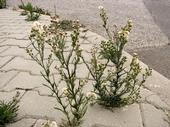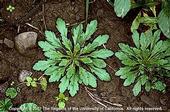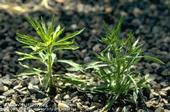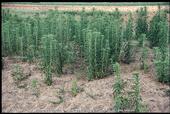- Author: Ben Faber
- Posted by: Gale Perez

Here's the latest from the UC ANR Topics in Subtropics blog written by Ben Faber, Farm Advisor, UCCE Ventura County.
It really has gotten out of hand--Hairy Fleabane and Horseweed which are both Conyza weed species that have run rampant this year because of the extra rain. It's also because they have become resistant to glyphosate herbicide. The problem has shown up all over the US and other parts of the world. Gradually as resistance has grown and their resistant fairy seeds have floated wherever the winds go, the weed is having a field day everywhere in...
- Author: Ben Faber
- Re-posted by: Gale Perez

From the Topics in Subtropics blog ∴ June 15, 2016
Researchers have now confirmed that six glyphosate-resistant weed species have been identified in California. Four have been known to exist for some time; they are horseweed (marestail, Conyza spp.), hairy fleabane, rigid ryegrass and annual ryegrass. To that list, junglerice and Palmer amaranth in the Central Valley have been recently added to the list. Additional weeds that have become more of a challenge to control and are on the suspect list are goosegrass and, in the central San Joaquin Valley, the summer grasses sprangletop and witchgrass.
There have never been a lot of...
- Author: Oleg Daugovish
- Posted by: Gale Perez

From the Topics in Subtropics blog :: July 5, 2013
It is not always easy to kill weeds with herbicides for several reasons, but if you apply the right material at the right time to susceptible weeds you expect control. But you should never assume it, because resistant weeds rely on this assumption.
Repeated use of herbicides with the same mode of action (usually the same target site within plant) selects for naturally occurring resistance traits in weed population. The few resistant weeds proliferate since there is no longer competition from susceptible types and if other control measures are not...
- Author: Kurt J. Hembree
- Posted by: Gale Perez

While both horseweed and hairy fleabane have been here since farming began in the region, it's only since about 2003 that they have become such an obvious problem, particularly in tree and vine systems and non-crop areas.
In the past, the traditional use of combinations of pre- and postemergence herbicides and/or cultivation was adequate to manage them. However, recent changes in environmental regulations, economics, herbicide use patterns (toward more postemergence-only programs), treatment timing, and glyphosate-resistant biotypes have all contributed to the problem. Other factors contributing to their spread include, high seed production, wind dissemination, lack of seed dormancy requirement, preference for undisturbed areas...
- Author: Mick Canevari
- Author: Brent Holtz
- Author: Brad Hanson
- Posted by: Gale Perez
Here's an article from the San Joaquin County Field Notes newsletter (Feb. 2014.)
Dormant Weed Control in Tree Nut Crops 2014
Mick Canevari, Farm Advisor Emeritus
Brent Holtz, Pomology Farm Advisor and UCCE County Director
Brad Hanson, Extension Weed Specialist, UC Davis
Current dry weather has preempted most normal winter weed germination and growth while prolonged periods of dry soil has caused some early weeds to desiccate and die. In most tree and vine herbicide trials conducted so far this winter—the...


